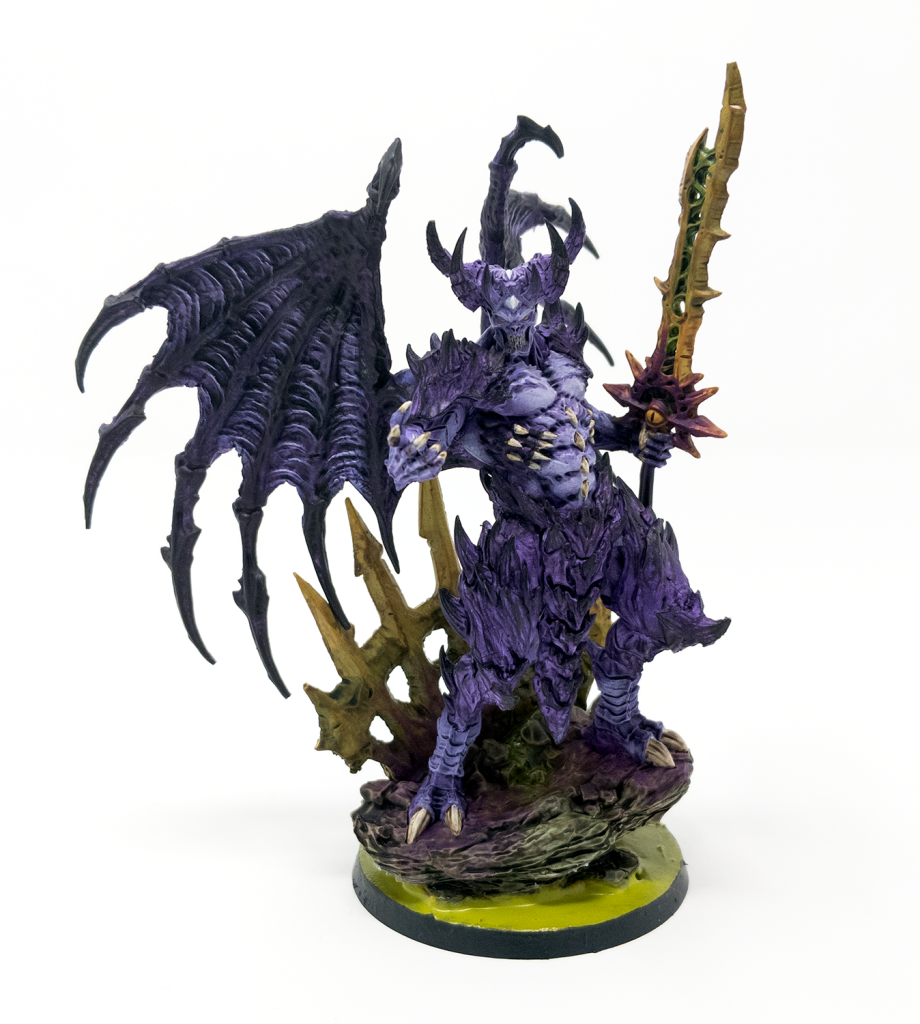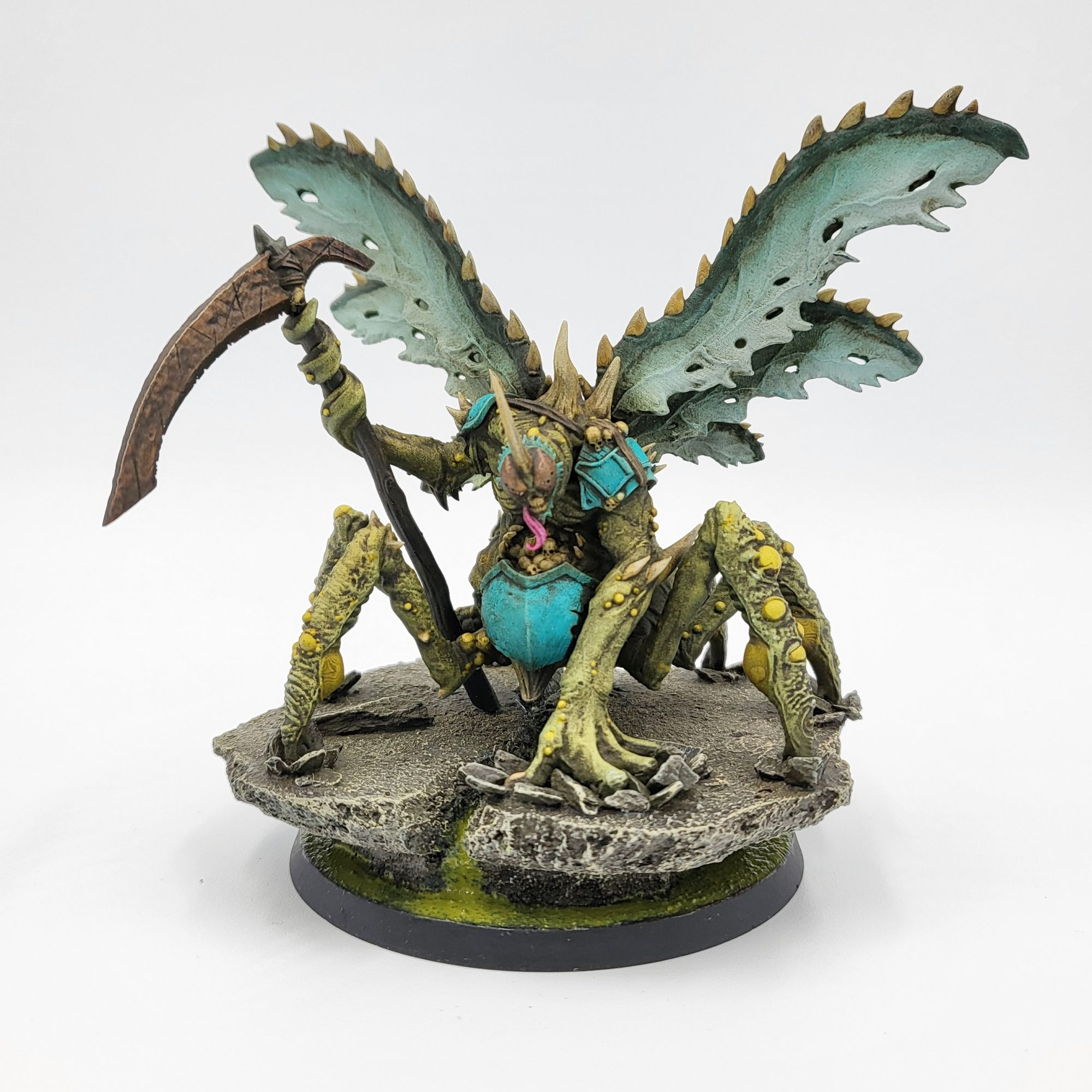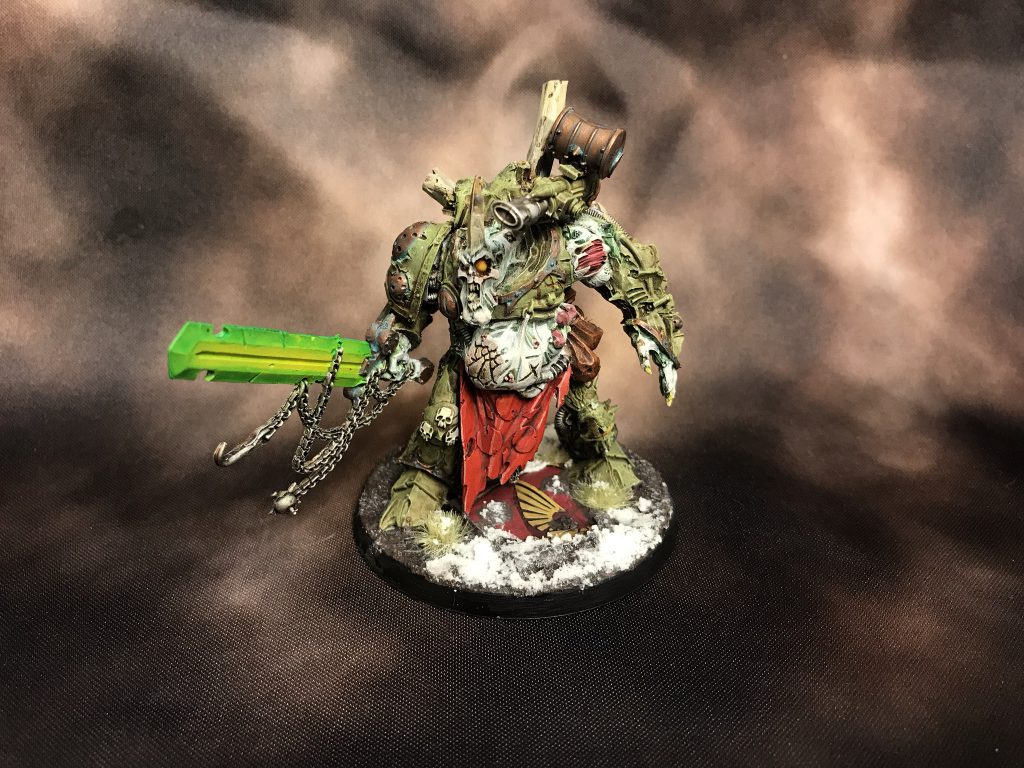This week’s Hammer of Math fully embraces the temptations of Chaos and looks at the impact of the various combinations of Daemon weapons for Daemon Princes. Thanks to reader Rafael for the suggestion!
The Daemon Prince represents the pinnacle of mortal achievement in service of the Dark Gods. The hulking behemoths, once Astartes, have forsworn the Emperor and dedicated themselves, body and soul, to the Ruinous Powers. The rewards for eternal damnation are considerable. Daemon Princes are true monsters (they get the keyword and everything) with access to a series of extremely unpleasant weapons. Purely for melee, their baseline stats of 2+ WS, S7, and 6 attacks can be further improved by three weapon options.
- Every Daemon Prince has a malefic talon which hits at S7, AP -1, and D2, and also provides an additional attack. They can also exchange their other weapon for a second talon.
- The hellforged sword hits at S8, AP -3, and D3.
- The daemonic axe hits at S9, AP -2, and D3.

As befitting esteemed heralds of Chaos, every Daemon Price is required to bear a Mark of Chaos. Each Mark provides a unique benefit depending on the God worshipped, and also determines what Relics the model can have.
- The Mark of Khorne adds +1S on the charge (or Heroic Intervention or being charged), and Daemon Prince also receives a special +1S and +1A bonus.
- The Mark of Tzeentch is defensive in nature and causes the first failed saving throw each turn to inflict 0 damage, and the Prince becomes a psyker that knows Skeins of Fate.
- The Mark of Nurgle is also defensive, causing attacks that have a Strength characteristic that is either equal to, or at least double the Toughness characteristic of the Prince to subtract 1 from the wound roll (so S6 or S12+). The Prince also becomes a psyker that knows Putrid Miasma.
- The Mark of Slaanesh causes the model to automatically fight first, and become a psyker that knows Delightful Agonies.
Finally, no Daemon Prince with a soul worth selling would be caught without a daemon weapon, unholy Relics which enhance whatever melee weapon the model is carrying. Daemon weapons come with a price; the player must roll equal to or under their Leadership on 2D6 or either suffer D3 mortal wounds or forego making any attacks with the weapon that fight. For a Ld 10 Daemon Prince the probability of passing the roll is 92%, so clearly they have things in hand. Since Daemon Princes are required to have a Mark of Chaos and serve a particular god, they’re limited to the four daemon weapons associated with those specific gods.
- Zaall, the Wrathful (Khorne) is a Very Angry weapon that adds D3 to the Damage characteristic of any attack made with it. Combined with all the bonuses from being a worshipper of Khorne this can be devastating.
- G’holl’ax, the Decayed (Nurgle) automatically wounds the target whenever they hit and prevents the enemy model from using any rules to ignore wounds that they lose.
- Q’o’ak, the Boundless (Tzeentch) ignores invulnerable saves. Ouch.
- Thaa’ris and Rhi’ol, the Rapacious (Slaanesh) causes the bearer to replace two weapons (the others only replace one), and every time the bearer is selected to fight it makes an additional D3 attacks with each weapon. This means a Daemon Prince of Slaanesh can potentially get 13 attacks, and is guaranteed to fight first.

So given all of the options and flexibility, how can we determine how effective each particular combination is? When dealing with a large number of options, using an expected damage/kills approach is a good starting point. In brief, expected wounds/damage looks at the average number that an attack will inflict against a particular target. It doesn’t take into account variance (which can be considerable), but in general when you’re trying to filter out options it’s fast and effective. For the purpose of this analysis we’ll take a look at a charging Daemon Prince with no bonuses from Legion, Wanton Slaughter, psychic powers, or Stratagems. It’s not perfect but with so many variables we have to start somewhere.
For targets we have four options, selected by the Goonhammer Brain Trust to represent a diverse array of potential threats/targets.
- A single wound Sister of Battle (T3, 3+ with Armour of Contempt, and a 6++) to represent a swarm threat.
- A three wound Terminator (T4, 2+ with Armour of Contempt, and a 5++) to represent a heavily armoured elite threat.
- An Armiger chassis (T7, 3+) for a lightly armored VEHICLE target.
- A Carnifex (T7, 2+, -1D) to serve as a dreadnought-style target.
- A Hive Tyrant (T8, 2+, 4++) for a hardened target.
The expected values are charted below.

The results are pretty interesting.
- The axe was only a better choice compared to the sword against the T8 target, and that advantage was eliminated when the wound roll was affected.
- Taking two talons is generally a poor choice. The extra attack does not offset the reduced damage, AP, or Strength.
- As expected the Khorne combination is particularly devastating, especially against multi-wound targets where the bonus damage can really shine.
- Nurgle was no slouch either thanks to the ability to ignore wounds. Where Khorne got the bonus through increased damage output, the Nurgle ability would be far less variable due to the elimination of the wound roll.
- Slaanesh performed best against the Sisters where the additional attacks were of most use.
- Tzeentch really suffered from the lack of invulnerable targets in this set.
- The prevalence of Armour of Contempt significantly reduces the need for invulnerable saves, as the number of weapons which can hit the AP -4 threshold is fairly low.

Thanks for reading! If you have any questions or comments feel free to drop us a note in the Comments below or email us at contact@goonhammer.com. That’s also the best way to suggest topics for future articles.


